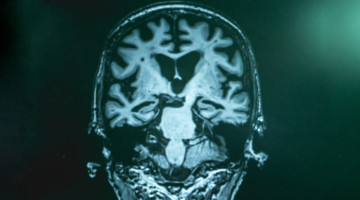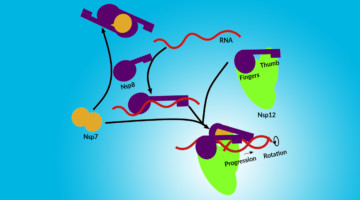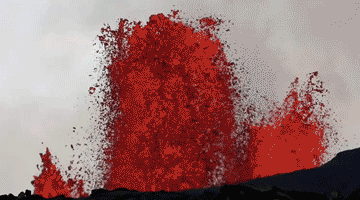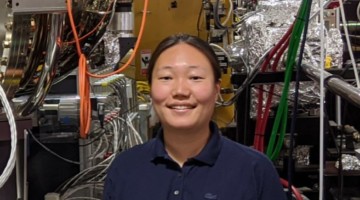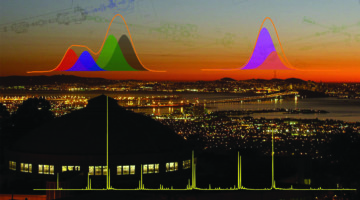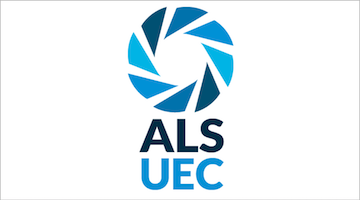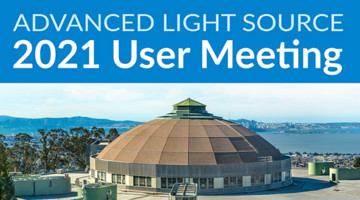Researchers detected nanoscale deposits of elemental copper and iron in brain tissues isolated from Alzheimer’s disease subjects. The discovery suggests new directions of study to determine the role that elemental metals might play in neurochemistry, neurobiology, and the development of neurodegenerative disease. Read more »![]()
![]()
ALSNews Vol. 429
July 28, 2021
Assembly of the SARS-CoV-2 Replication Mechanism
Using a multimodal approach that included x-ray scattering at the ALS, researchers determined how components of the SARS-CoV-2 replication mechanism fit together. A better understanding of how this protein complex works provides insight into potential structural or functional weak spots to exploit for drug development. Read more »![]()
![]()
In a Hawaiian Lava Fountain, Fluid Magma Turns Brittle
Compared to the violent explosions of Mount Vesuvius or Mount St. Helens, Hawaiian volcanic eruptions are relatively calm, characterized by flowing rivers and fountains of lava. Here, researchers have discovered that even low-viscosity magma sometimes behaves more like brittle glass that shatters into fine particles. Read more »
A Multiscale Picture of Oxygen Loss in Battery Electrodes
In lithium-ion batteries, oxygen atoms leak out of electrode particles as the lithium moves back and forth between electrodes. Now, researchers have measured this process at multiple length scales, showing how the oxygen loss changes the electrode’s structure and chemistry, gradually reducing the amount of energy it can store. Read more »
David Prendergast Wins 2021 Shirley Award
David Prendergast, an internationally recognized computational scientist whose first-principles calculations of x-ray spectra have helped with the interpretation of countless experiments done at the ALS, has been awarded the 2021 Shirley Award for Outstanding Scientific Achievement by the ALS Users’ Executive Committee. Read more »
Na Hyun Jo, Materials Sciences Postdoc
Na Hyun Jo has only been at Berkeley Lab for five months, but she’s already helping to organize the Energy Sciences Area Science Hour. Find out more about her research and what inspired her to become a scientist. Read more »
Chemical (and Strategic) Transformations at Beamline 9.0
The Chemical Dynamics beamline, used for gas-phase vacuum ultraviolet (VUV) experiments, was one of the first beamlines built at the ALS. Since then, the program has undergone several strategic transformations, enabling the study of complexity in clusters, aerosols, and nanoparticles using both VUV and soft x-ray radiation. Read more »
September 1 Deadline for General User Proposals
The User Office is accepting new General User Proposals (GUPs) from scientists who wish to conduct research at the ALS in the 2022-1 (January–July) cycle. The deadline for submissions is September 1, 2021. Applicants are reminded that they may request joint access to the Molecular Foundry, a nanoscience user facility at Berkeley Lab, to support their ALS activities. Read more »
Survey on Remote Access
The ALS and the Users’ Executive Committee would like to better understand the impact this past year’s restrictions had on the user community as well as seek suggestions on possible improvements that would facilitate future beamtime. We request your input on this remote access survey by July 30. Read more »
Register for the 2021 User Meeting (August 10–13)
This year’s User Meeting features, for the first time, a Nobel panel (and Q&A) with Ada Yonath and Stanley Whittingham. Bookmark workshops and tutorials that interest you so that the organizers know how many participants to expect. Remember: the student poster competition and general poster session are first come, first served! Read more »
